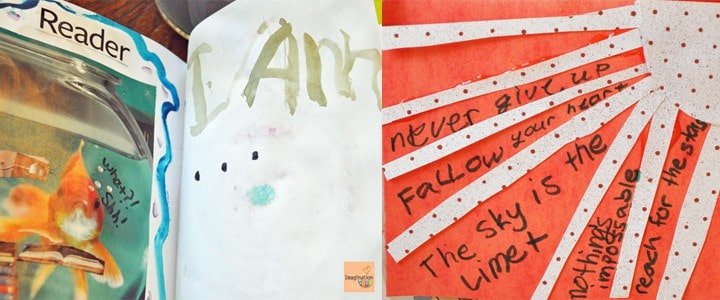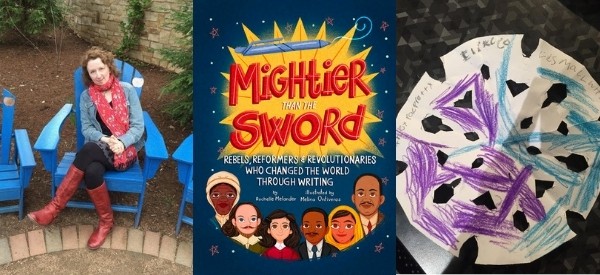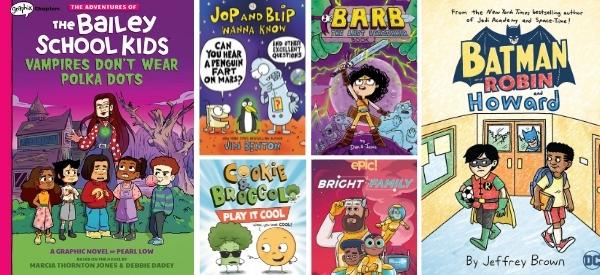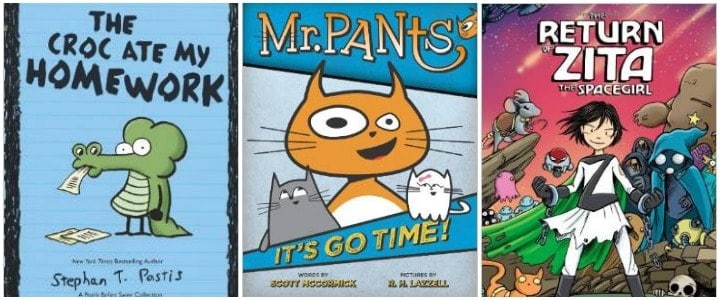38 Wonderful Children’s Animal Books
This post may contain affiliate links.
Why should we read children’s nonfiction animal books? Teaching kids about animals is akin to teaching colors and numbers. Right? Children love to learn how to identify dogs, cats, cows, and chickens. Even better when they can make the animal noise, right?
As children grow, their interest in animals expands. Now they can learn more facts and details about animals from around the world with children’s picture books and nonfiction books.
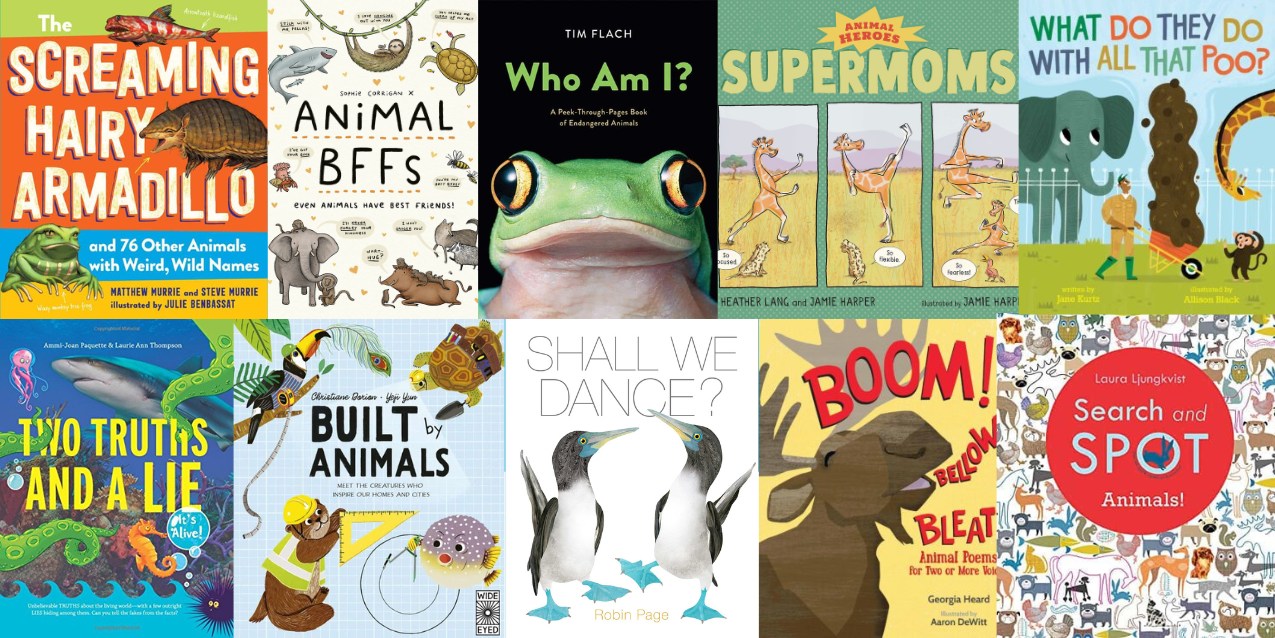
Below, you’ll find so many excellent reading choices about animals for young readers and independent readers. In other words, ages 0 – 14.
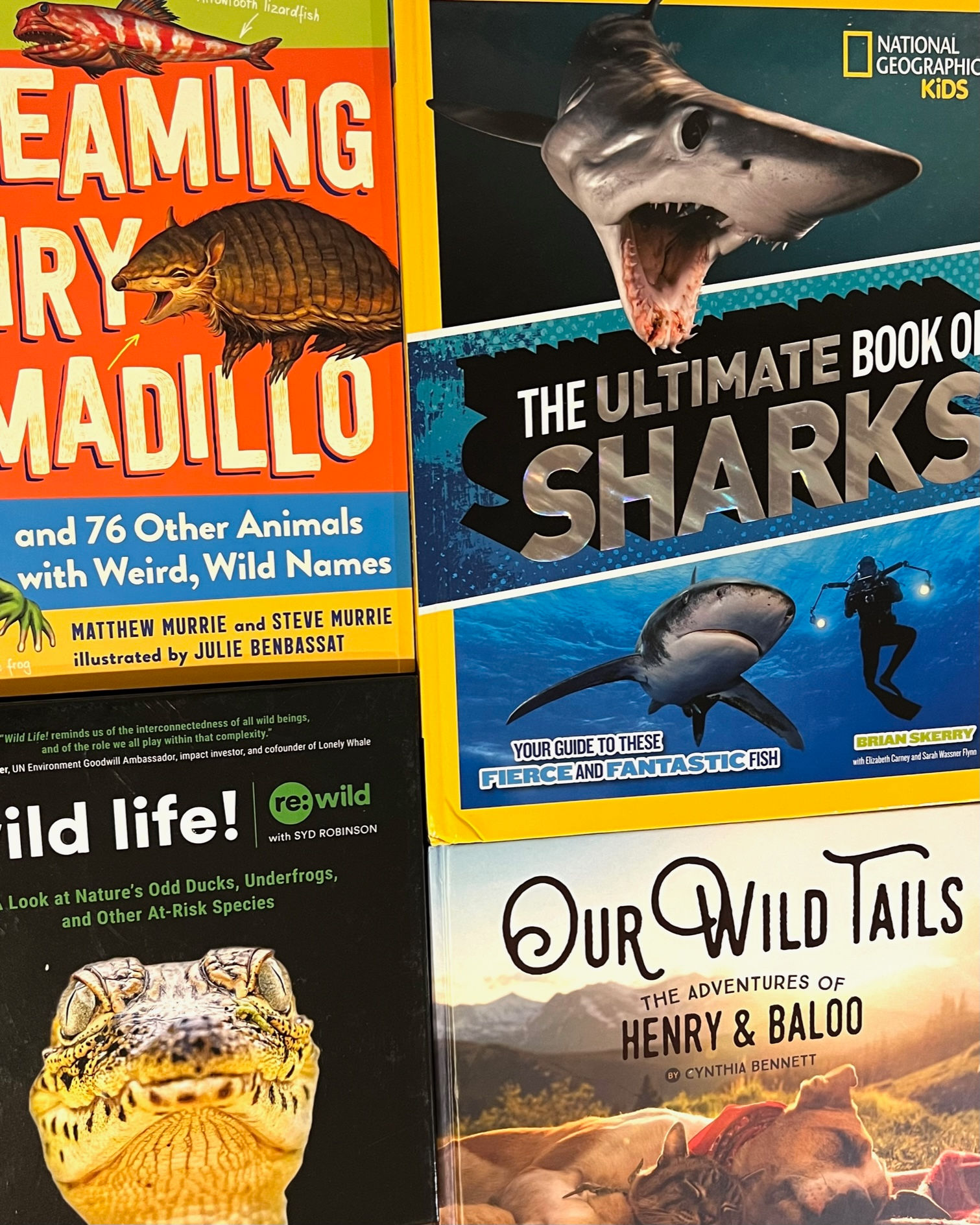
If you want more specific animal categories and not general books about animals, look through these lists:
Amphibians & Reptiles: Amphibians & Reptiles
Bees: Picture Books About Bees
Birds: Beautiful Bird Books for Kids
Bugs: Best Children’s Books about Bugs (Insects, Worms, and Arachnids)
Cats: Picture Books About Cats
Dinosaurs: Outstanding Dinosaur Books for Kids
Dogs: Picture Books About Dogs
Narwhal: Best Narwhal Books for Kids
Nocturnal Animals: 12 Books About Nocturnal Animals
Ocean Animals: 29 Books for Kids About Ocean Animals
Pets: Picture Books About Pets
Sharks: Shark Week Books for Kids
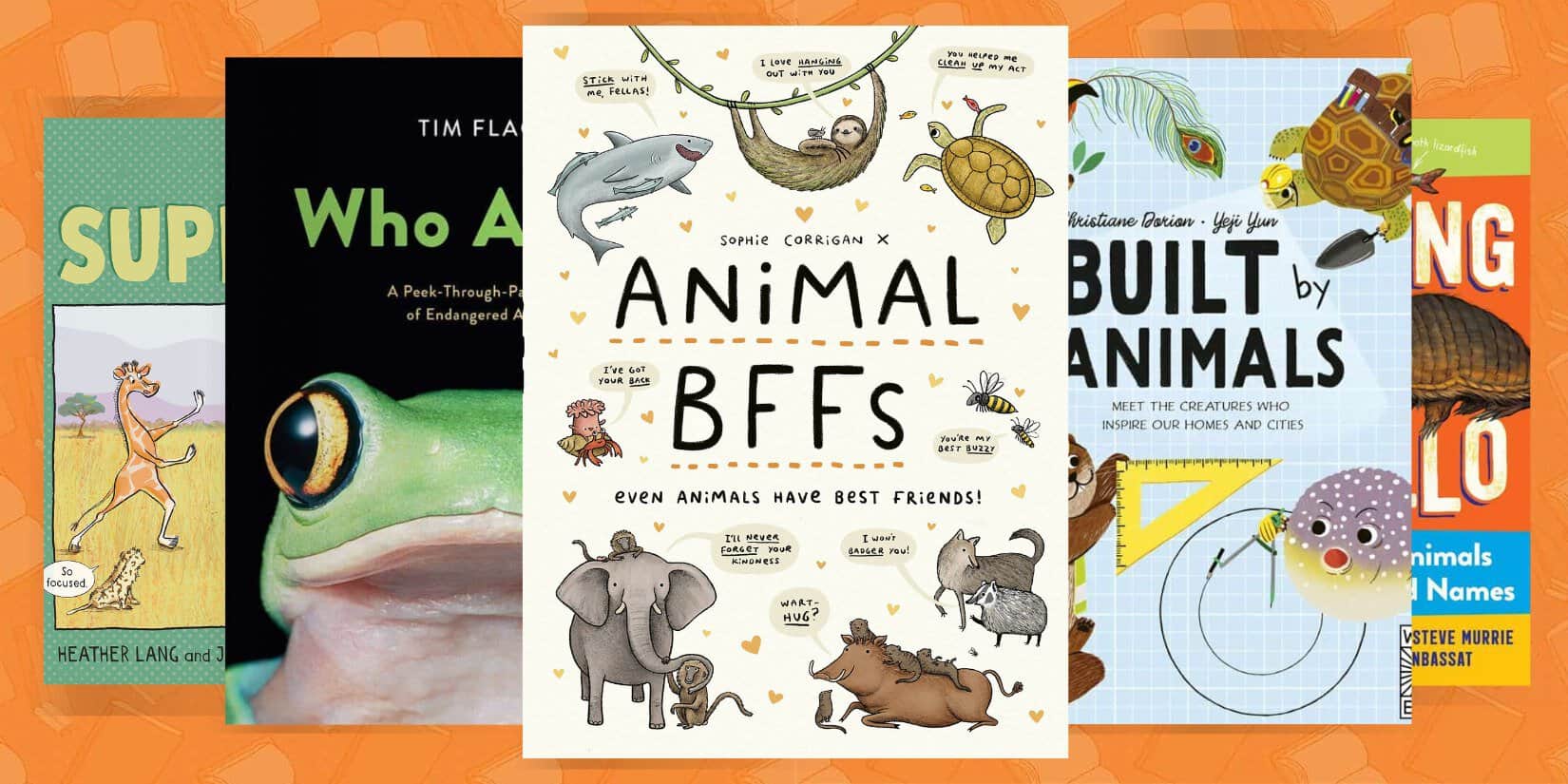
Wonderful Animal Books for Kids

Mommy Snuggles by Anne Gutman and Georg Hallensleben (ages 0 – 3)
Animal mothers take good care of their babies. “Mommy swan glides with her cygnet / under her wing.” See the animals and learn the names of the adults and babies.

Brother, Sister, Me and You by Mary Quattlebaum (ages 2 – 6)
Celebrate the sibling bond among animals with gorgeous photographs that match the animal’s actions. “Guppies flash with finny flicks.” In my experience, children prefer photographs to illustrations of animals so I know this book will be a lovely read-aloud choice for your young readers.
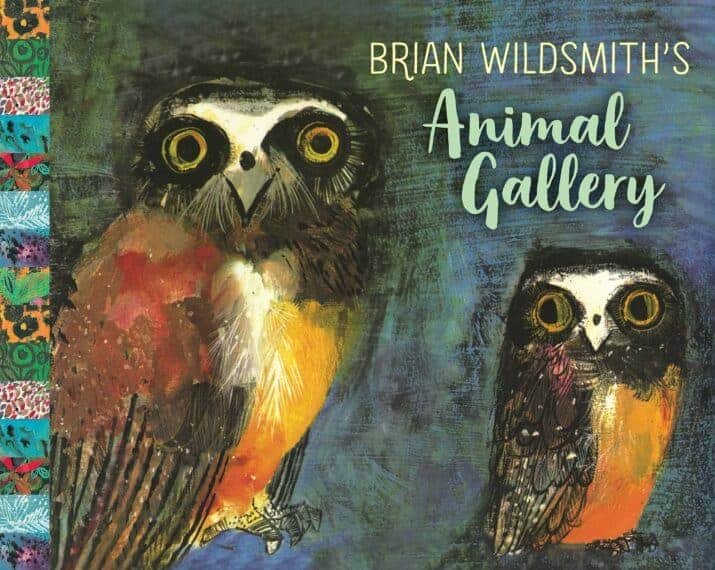
Animal Gallery by Brian Wildsmith (ages 4 – 8)
Although there are many animal books about the nouns for collectives of animals, this book stands out for its lush illustrations. A bloat of hippopotamuses shows large, expressive hippos. Colorful parents on green and dark brown backgrounds depict a pandemonium of parrots. You’ll also find a stare of owls, a prickle of hedgehogs, and a hover of trout, just to name a few.
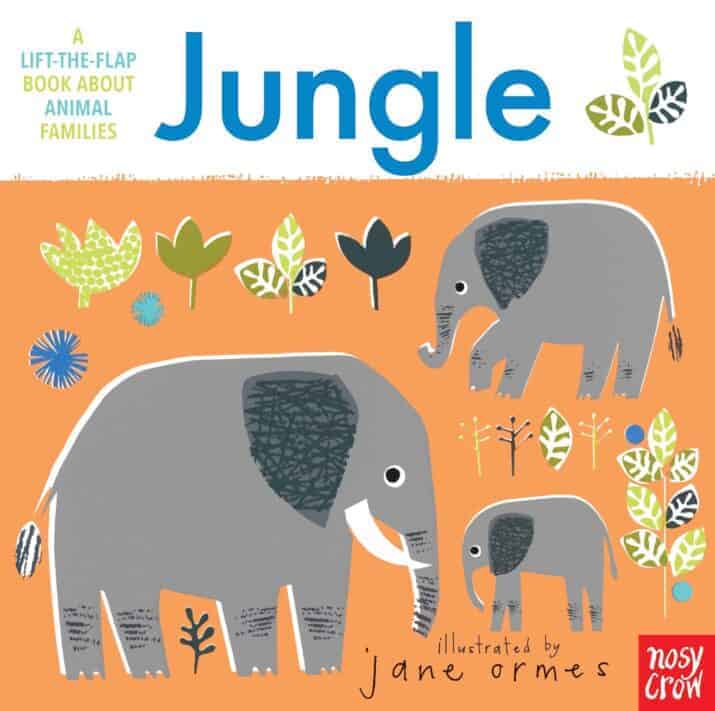
Jungle illustrated by Jane Ormes (ages 0 – 3)
What an adorable book to learn about animal families! I love the color schemes with neon orange, blues, and greens. For each animal, you’ll read what the daddy is called, the mommy is called, and then lift-the-flap under the mommy to read what the babies are called. “A daddy peafowl is called a peacock. A mommy peafowl is called a peahen. Baby peafowl are called peachicks.” Also in this series and the same format but set on a farm is the new Noisy Crow board book called Farm.

Packs by Hannah Salyer (ages 4 – 8)
Beginning with minimal text, these gorgeous, captivating illustrations show groups of animals–herds, pods, packs– animals together. As you’re invited into the book, the author presents more interesting text written from the collective like this, “We frogs can become one noisy army…Together, we sing!“
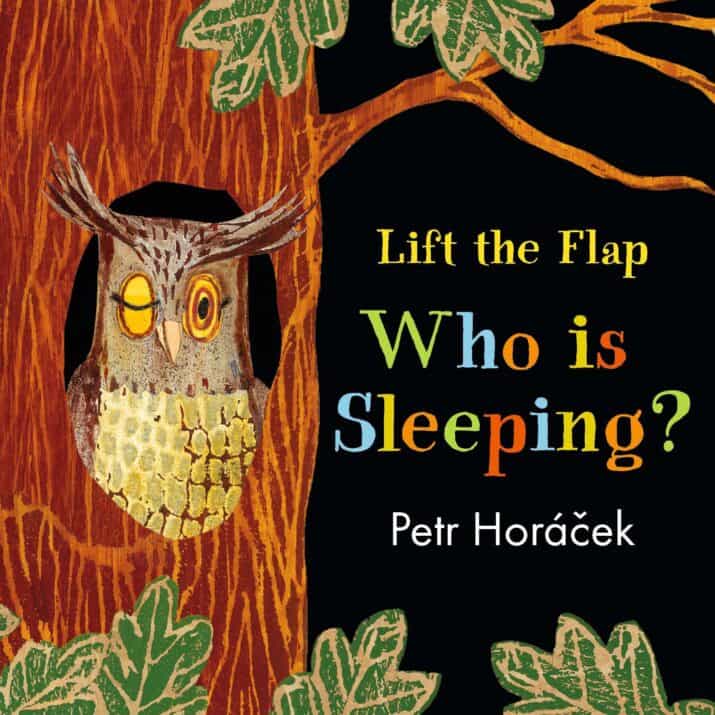
Who Is Sleeping? A Lift-the-Flap Book by Petr Horacek (ages 0 – 3)
Introduce your babies and toddlers to sleeping animals like a bear, a frog, and a fish in their habitats, like a river or a tree, in this interactive board book.
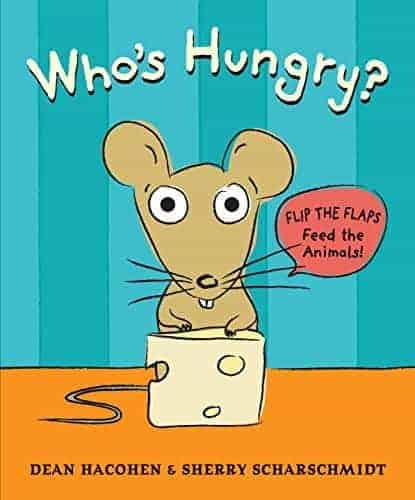
Who’s Hungry Flip the Flaps Feed the Animals by Dean Hacohen and Sherry Scharschmidt (ages 0 – 3)
Help feed the animals! On each two page spread, lift the flap to see what it is that animal wants to eat. This is a great animal book for toddlers who are just learning about animals and practicing their fine motor skills. The illustrations are bold and simple, as is the text. Very well done!
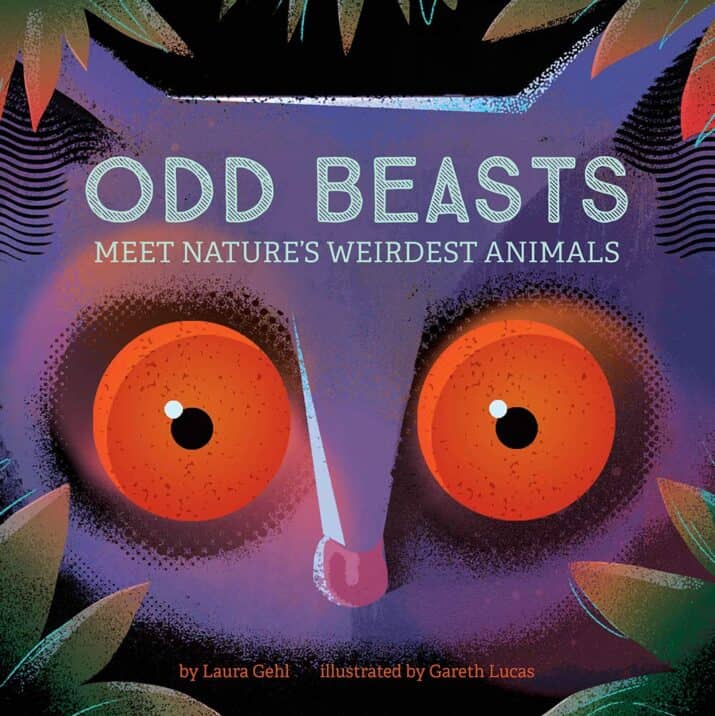
Odd Beasts Meet Nature’s Weirdest Animals by Laura Gehl, illustrated by Gareth Lucas (ages 0 – 3)
Cute rhymes and illustrations provide a playful introduction to unique and cool animals in a darling board book. “This spider has two horns.” Back matter shares factual information about each creature like the Long-Horn Orb-Weaver Spider.
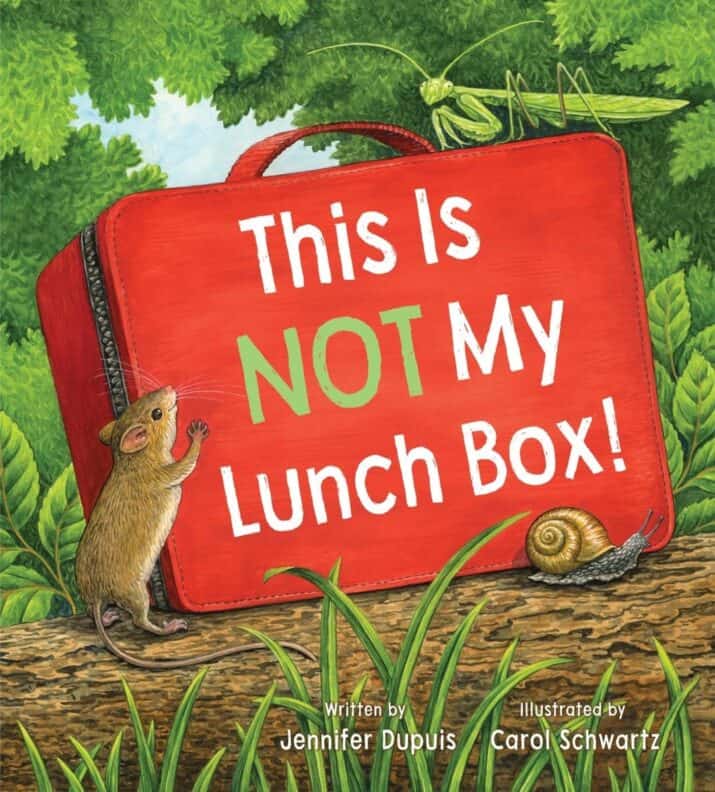
This is Not My Lunch Box! written by Jennifer Dupuis, illustrated by Carol Schwartz
FREE BOOK ACTIVITIES DOWNLOAD
In this innovative way to teach readers about forest animals, a camping child opens up a lunch box that is not the child’s but actually the lunch of an animal. Can you guess who it belongs to? The lunch box of bugs belongs to a downy woodpecker. The lunch box of worms, nuts, and truffles belongs to a jumping mouse. The lunch box of snails, spiders, and eggs belongs to a wood frog. Kids will love learning and guessing who would eat these lunch box feasts while admiring the brilliant illustrations with vibrant colors that pop off the page. Outstanding.
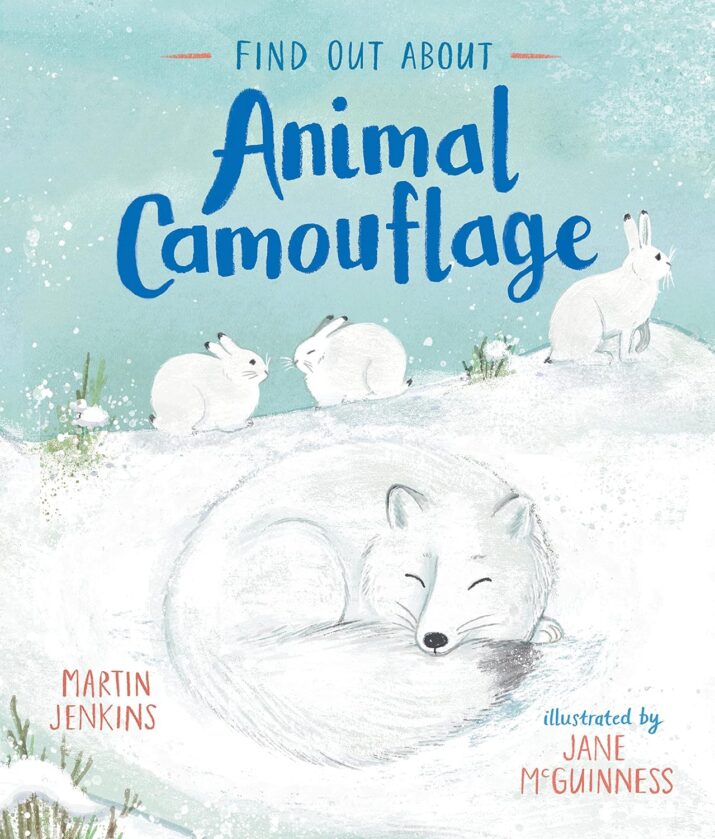
Animal Camouflage written by Martin Jenkins, illustrated by Jane McGuinness
Some animals look like leaves; others look like twigs or a flower. Some animals hide in the desert while others hide in the ocean. The simple, larger text narrates the basics of animal camouflage and smaller, more complex text gives factual information.

ABC Animals! An Alphabet Adventure from Anteater to Zebra by Stephen F. Majsak (ages 4 – 8)
Oversized, full-color photographs show impressive animals from A to Z on sturdy board pages. Rhyming text moves readers through the book of camels and ducks; meerkats and newts; sea lions and tortoises, perfect for toddlers and preschool readers learning about animals and the alphabet.

Wombats Are Pretty Weird: A (Not So) Serious Guide by Abi Cushman
What a delightfully adorable informational book about wombats! Abi’s done it again with funny fictional dialogue, the right amount of valuable informational text, and charming illustrations. Oh, and there’s cube-shaped poop–which is pretty weird but also, as the book says, quite wonderful.
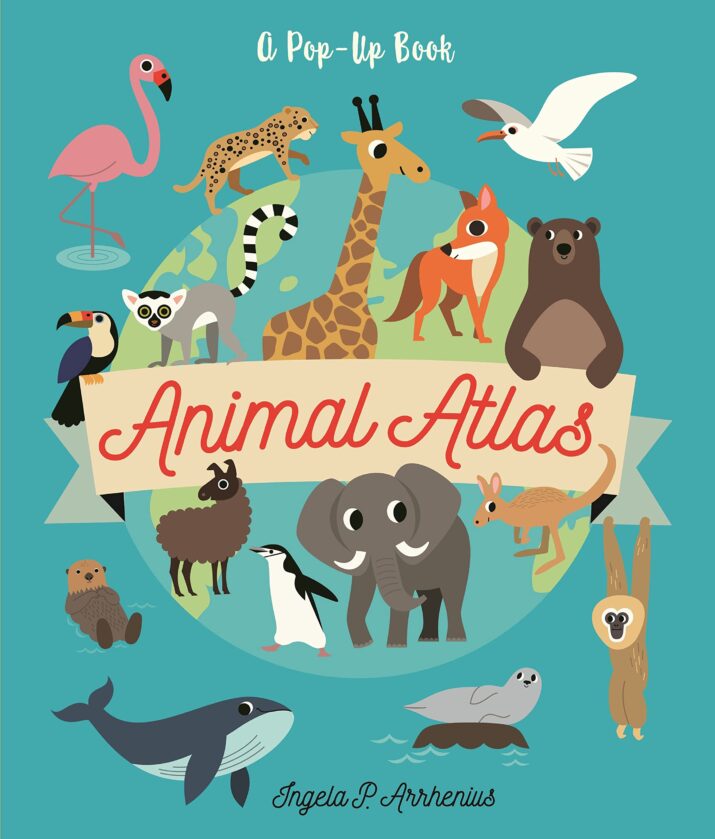
Animal Atlas Pop Up Book by Ingela P. Arrenius (ages 4 – 8)
Each two page spread shows a continent (or two) and some of the animals that live there with a pop up and a lift-the flap with a factoid behind the flap. Africa has a pop-up elephant and a lift-the-flap hippo, for example. Bold, graphic art is simple and appealing for young learners.
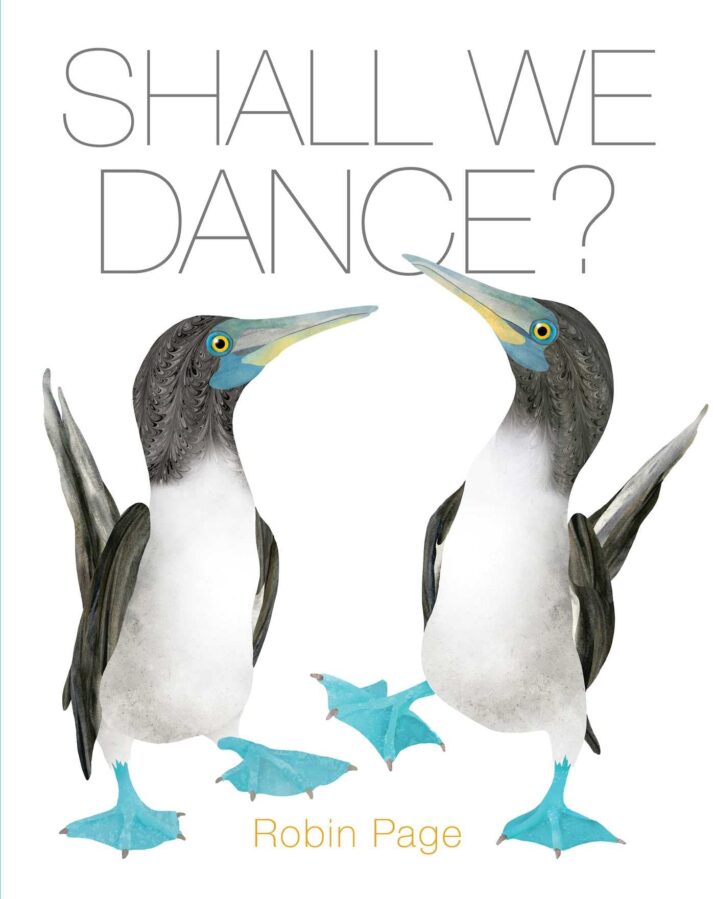
Shall We Dance? by Robin Page (ages 4 – 8)
You’ll love these creatures who high-step and tap off the pages with vivid verbs, informational facts, and colorful illustrations. “Turtles tickle… Eagles cartwheel… Crabs wave.” Each page features a creature and its strut, spin, or shimmy, plus an informational paragraph. Fun, exciting, and fact-filled!
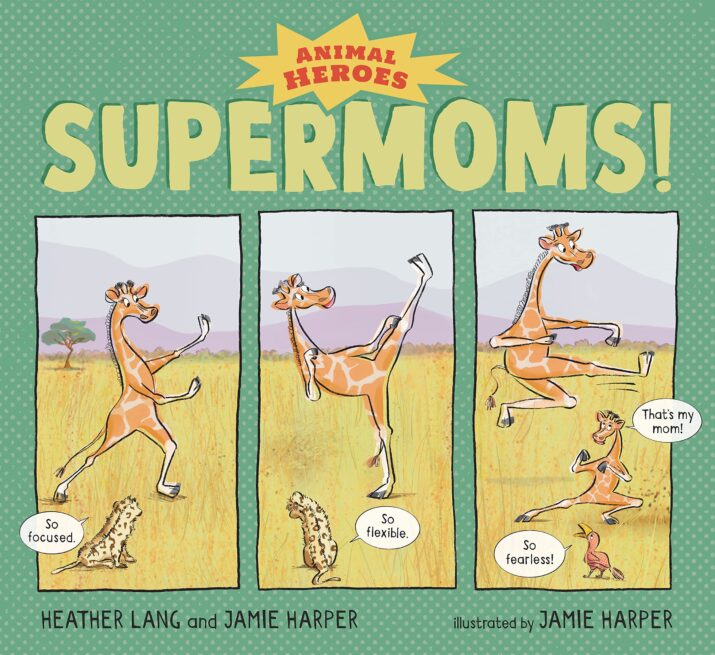
Supermoms! by Heather Lang and Jamie Harper, illustrated by Jamie Harper (ages 4 – 8)
Did you know animals are moms, too? And they make safe, comfy homes like the groundhogs and red-knobbed hornbill. They’re creative with transportation — just look at a wolf spider mom carrying her spiderlings on her back or an American alligator carrying her hatchlings in her mouth. Fascinating facts about animal supermoms are paired with engaging comic-style illustrations.
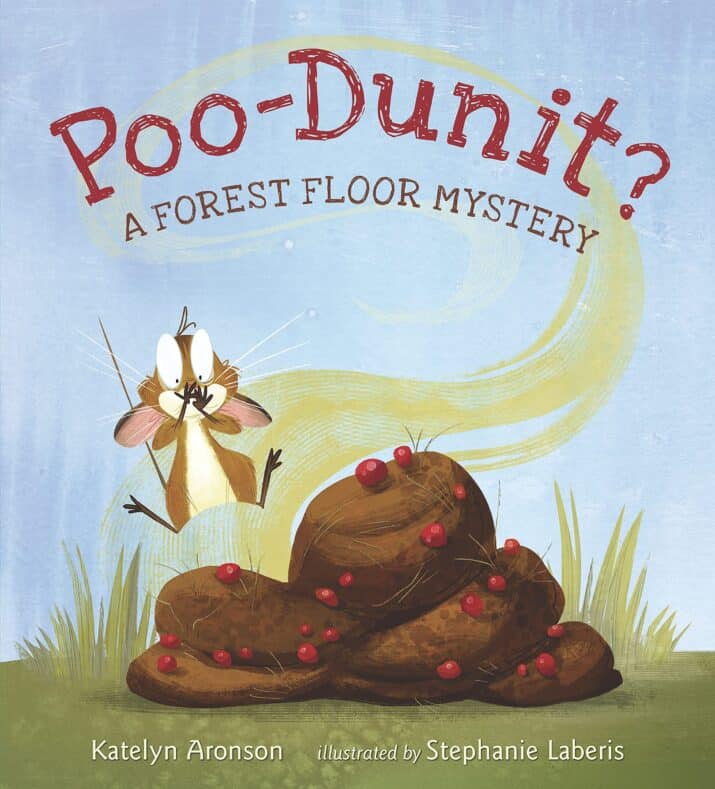
Poo-Dunit? A Forest Floor Mystery by Katelyn Aronson, illustrated by Stephanie Laberis (ages 4 – 8)
One morning, Mouse finds a huge poo outside her house — and she decides to investigate to find out who pooed it. Mouse asks the forest friends if it’s theirs but they each explain why their poo is different in DETAIL (gross and informative!) until they finally discover who did it. But then they have to get it out of Mouse’s way — and the mice work together to spread it as fertilizer for flowers.
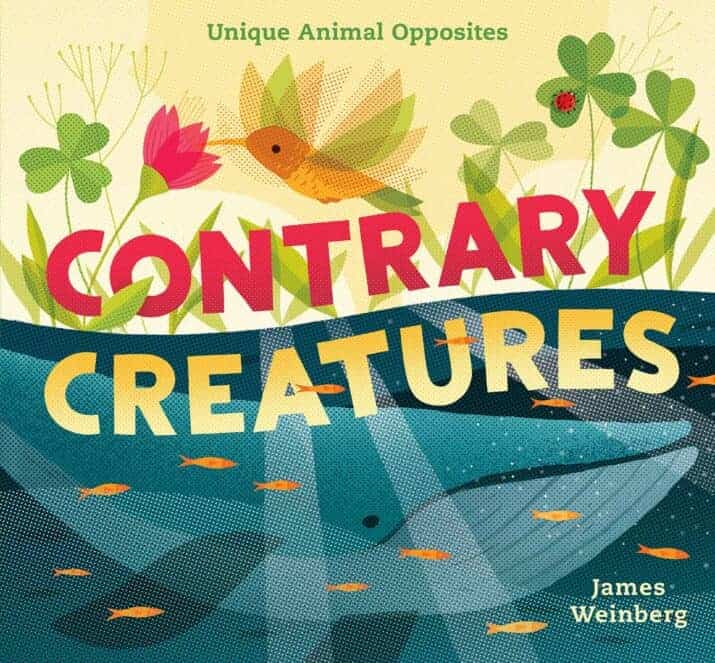
Contrary Creatures by James Weinberg (ages 2 – 4)
This picture book is a lovely introduction to animals with simple descriptions and unique illustrations! “Some move very slowly . . . but some are fast.” You’ll find yourself with plenty to discuss. Plus, you’ll enjoy the variety of creatures and the unique dotty illustrations.
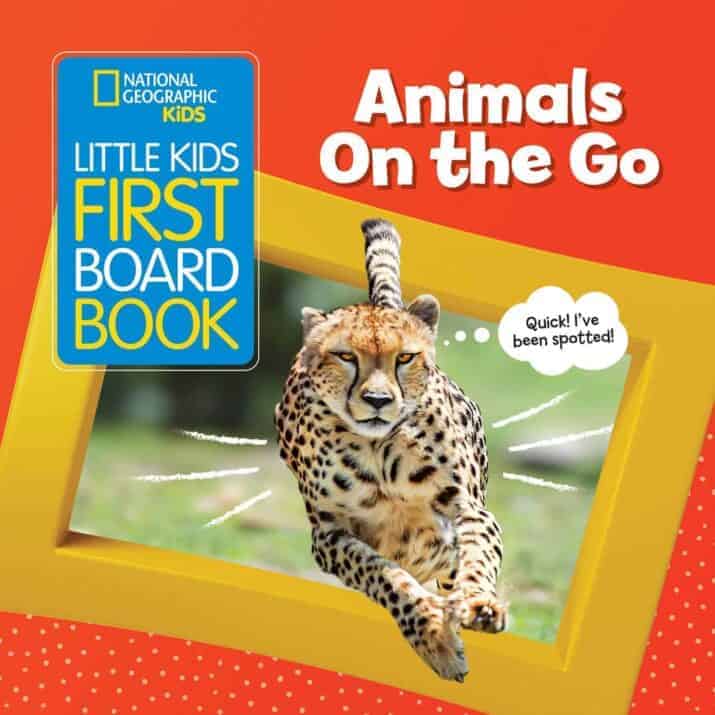
Animals on the Go (National Geographic Kids) (ages 2 – 5)
Full-color photos show young readers moving — slithering, hopping, sliding. I like the simple text plus bonus circle insets of info and goofy thought bubbles.
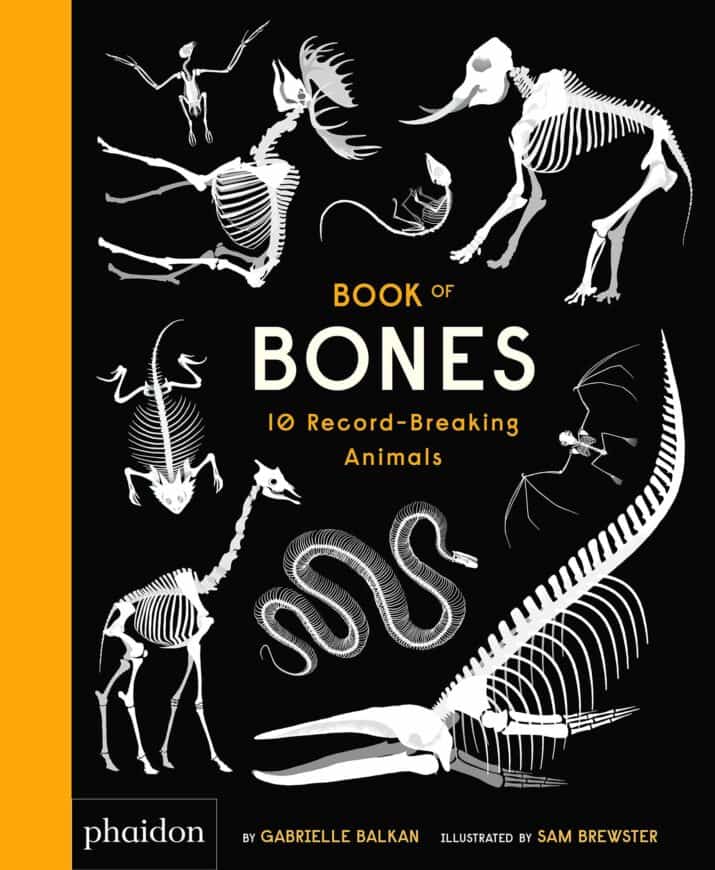
Book of Bones: 10 Record-Breaking Animals by Gabrielle Balkan, illustrated by Sam Brewster (ages 6 – 12)
Oversized, dramatic white-on-black pictures of animal bones catch your attention. Use the picture and clues to guess what animal it is. Turn the page to see the colorful picture, the answer, and more information. This fascinating book will get kids jazzed about both bones and cool animals.
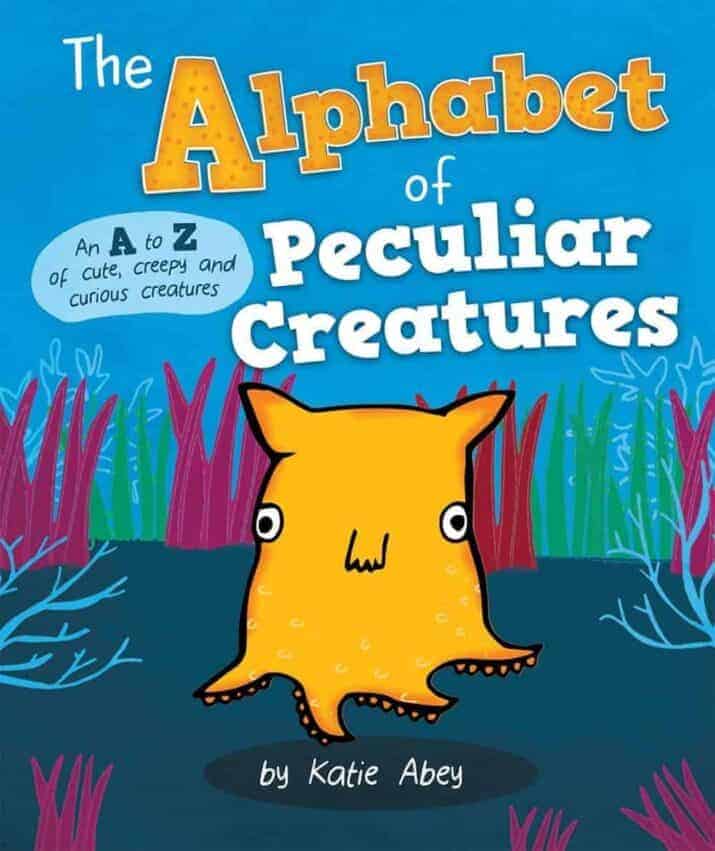
The Alphabet of Peculiar Creatures by Katie Abey (ages 8 – 12)
Kids who like wacky and weird will adore this book of unusual creatures, starting with A for Axolotol and continuing to J for Jerboa and Z for Zebu. Each page shows an illustration of the animal plus the pronunciation and a sentence or two of information about the animal. I love this book!
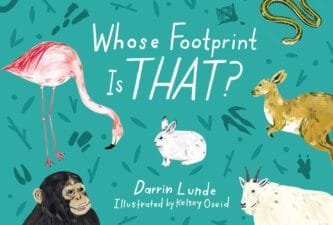
Whose Footprint Is That? by Darrin Lunde, illustrated by Kelsey Oseid (ages 6 – 9)
The repeating question “Whose footprint is that?” gives kids a beat, a sense of what to expect. On the page of questions, readers will notice an illustrated clue (part of the animal) as well as read a written clue, “These are two footprints. They were made by hopping.” This picture and factual support are supportive young readers as they make deductions based on the clues. The entire experience of this book, the art as well as the content, makes nature exciting and appealing to young readers. Highly recommended.
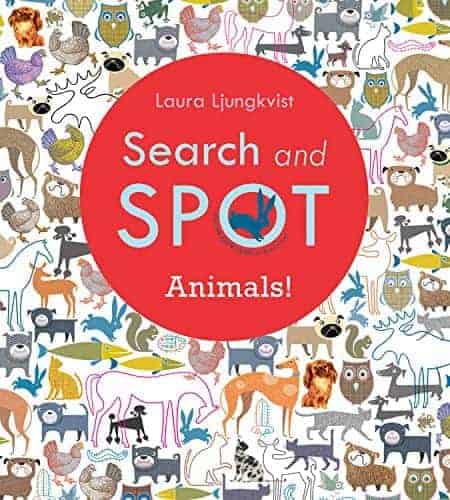 Search and Spot Animals! by Laura Ljungkvist (ages 4 – 8)
Search and Spot Animals! by Laura Ljungkvist (ages 4 – 8)
Ljungkvist’s hidden picture picture book illustrations are simple, clean, and not too crowded. For example, on a bright yellow background, look at the purple and blue chickens to find a dozen eggs. Engaging.
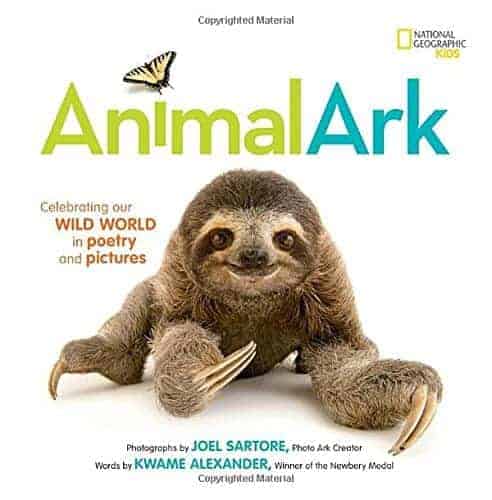
Animal Ark Celebrating Our Wild World in Poetry and Pictures by Kwame Alexander, photos by Joel Sartore (ages 8 – 12)
Alexander writes about each animal or animal grouping in evocative haikus with jaw-dropping photographs taken by Joel Sartore. For a dramatically angled fruit bat on a black background, Alexnder writes “wings like a cape / ready for flight / into the sweet, dark night“.
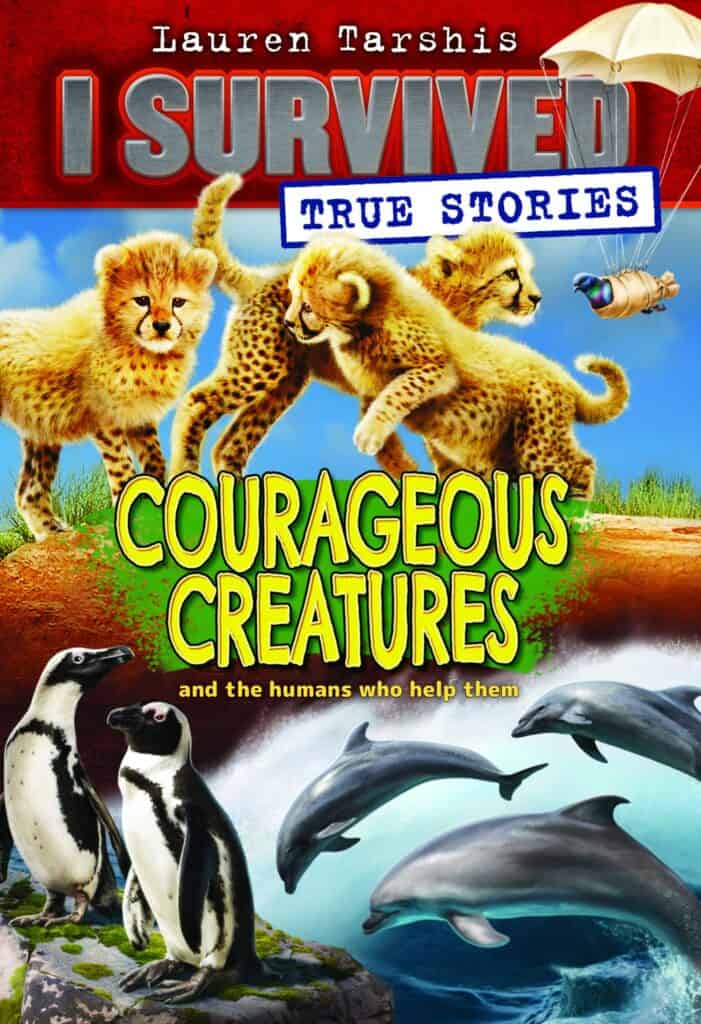
Courageous Creatures and the Humans Who Help Them I Survived True Stories by Lauren Tarshis (ages 6 – 10)
Superb! Four compelling stories of animals and humans will keep readers engaged. From carrier pigeon hero of WW I to cheetah cubs adopted by a human, these will share true stories for any animal lover. Filled with lots of black and white photographs and factual information that supports each story. For example, read about echolocation related to the dolphin story and general information about marine animals. Highly recommended.
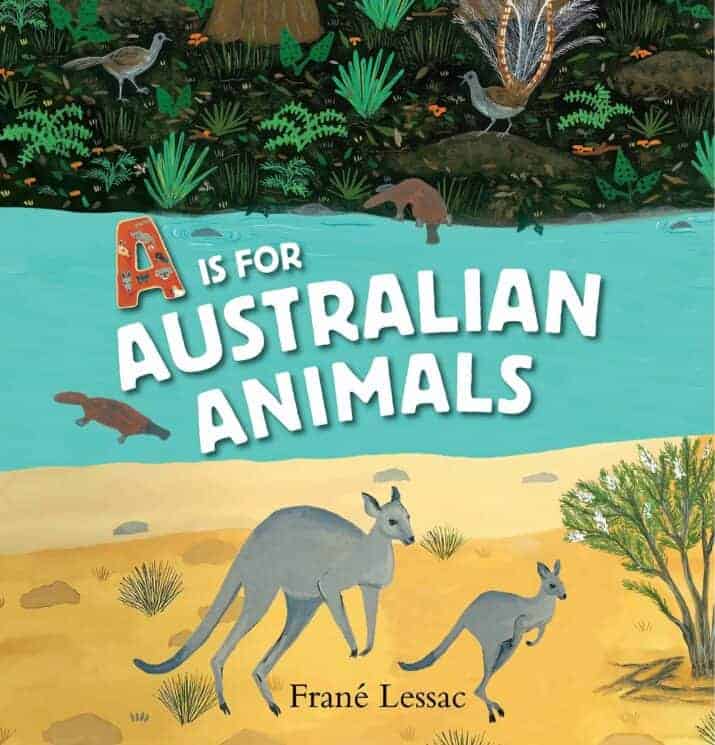
A is for Australian Animals by Frane Lessac (ages 8 – 12)
Gorgeous artwork showcases the animals of Australia with digestible tidbits of information about each one. Australia has some of the most interesting wildlife I think — emus and numbats, platypus and yabby. You’ll learn a lot from this picture book. Add this to your classroom library, your kids will thank you.
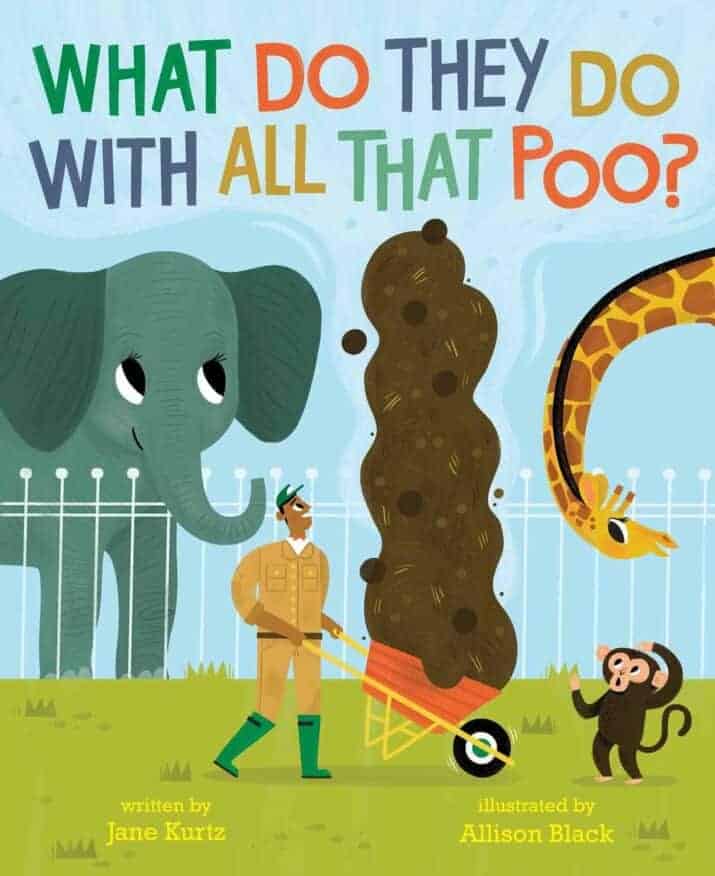
What Do They Do With All That Poo? (ages 8 – 12)
There’s potty humor, and then there are animal books like this — literally about poop. Depending on your tolerance for grossness, this book will probably fascinate you and your kids. We love it! Learn about the poop of different zoo animals — pandas, hippos, elephants, hyenas, bats, and more. You’ll read what’s in each animal’s poo, the shape and color, and other pertinent facts. If you’ve ever been curious about animal poop, quell your curiosity with this informative picture book.
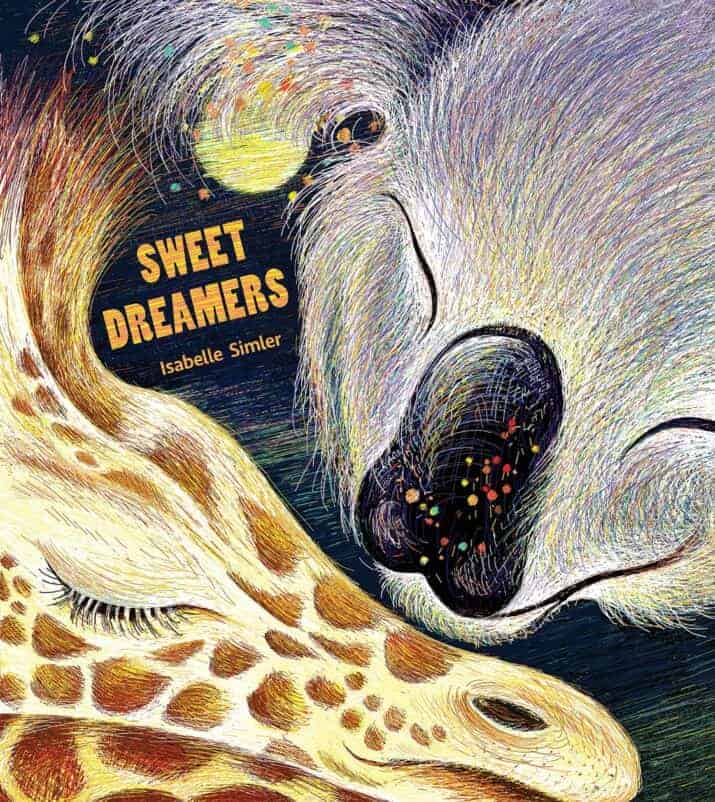
Sweet Dreamers by Isabelle Simler (ages 8 – 12)
Each evocative poem captures an animal sleeping and dreaming, giving us imagery that transports us to those sleepy moments. “The hedgehog dreams safely in his shelter. Under a pile of leaves, his spiky coat, he’s rolled up, wrapped up for a long rest.” The illustrations have so much movement — neon, black, white, red, and green with lots of lines. It’s fascinating to see the humpback whale sleeping underwater “the humpback whale dreams vertically with plankton at every level.“
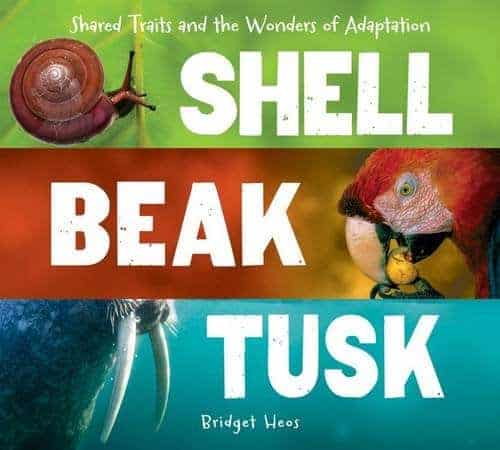
Shell Beak Tusk: Shared Traits and the Wonders of Adaptation by Bridget Heos (ages 6 – 9)
Interesting information about adaptations like tall ears, spines, camouflage, and long sticky tongues plus gorgeous full-colored photos (that I could look at all day long) and brightly colored pages, make this a nonfiction book kids are sure to pour over for hours.
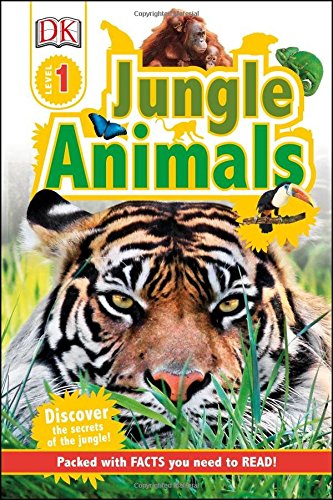
DK Level 1 Jungle Animals by Camilla Gersh (ages 5 – 8)
This easy reader book packs a big punch with the perfect balance of colorful visuals (photographs) and leveled, informational text. Fantastic!
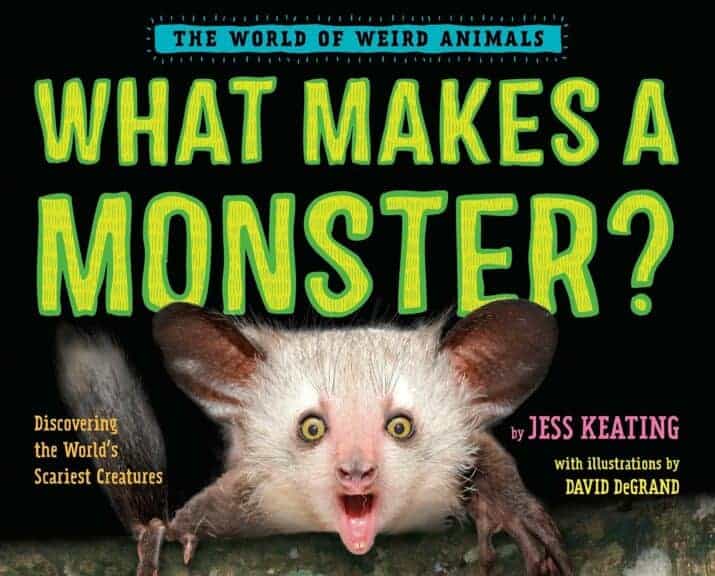
What Makes a Monster? Discovering the World’s Scariest Creatures by Jess Keating, illustrations by David DeGrand (ages 6 – 12)
Keating writes in a way that gives kids lots of information in a readable, engaging way. I love the design, too –it’s a mix of photographs, illustrations, cool fonts, and bright colors. What Makes a Monster is a must-read filled with unexpected information about fascinating, dangerous animals.
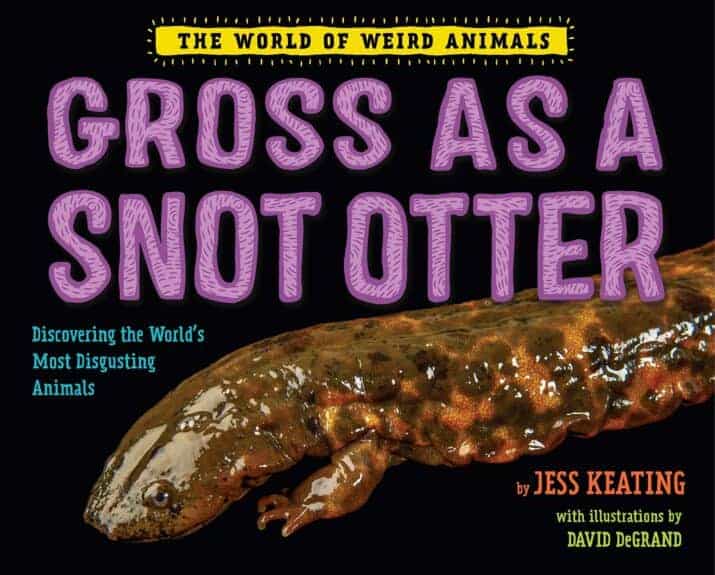
Gross As A Snot Otter: The World of Weird Animals by Jess Keating, illustrated by David DeGrand (ages 6 – 12)
Keating’s brilliant animal books continue with a book featuring the grossest animals on the planet. Colorful and appealing layouts, plus photographs and illustrations, add so much pizazz that you can’t help but read this book cover to cover. Well-written, engaging information about the snot otter, a salamander covered in mucus, a zombie worm who lives in a whale carcass and eats bones, and many more animals will soon make you an expert on these gross animals, too.

Baby Animals (Animal Planet) by Dorothea DePrisco (ages 7+)
Gorgeous photos and interesting facts make this one of those books you can easily flip through to find the photos and interesting facts about young animals you want to read. Plus, the cuteness factor is off the charts!
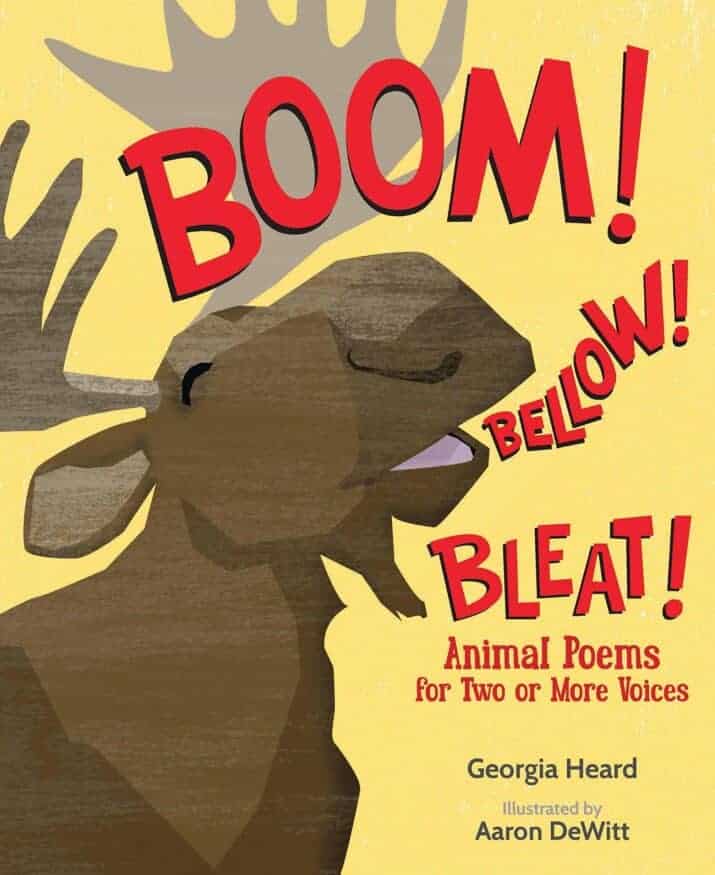
Boom! Bellow! Bleat! Animal Poems for Two or More Voices by Georgia Heard, illustrated by Aaron DeWitt (ages 8 – 12)
This poetry book will help kids understand the beauty of words, oral reading, and imagery, but they’ll also see the playfulness in poetry and discover new animal sounds they’ve never known. The poems are written in several colors. The book is filled with the noise of fish, geese, frogs, mockingbirds, snakes, bees, and many more animals. This is a MUST-OWN book for teachers and school libraries, homeschoolers, and poetry-loving parents. It captures the most interesting sounds of nature. Kids will clamor to read these with parents, teachers, friends, and classmates.
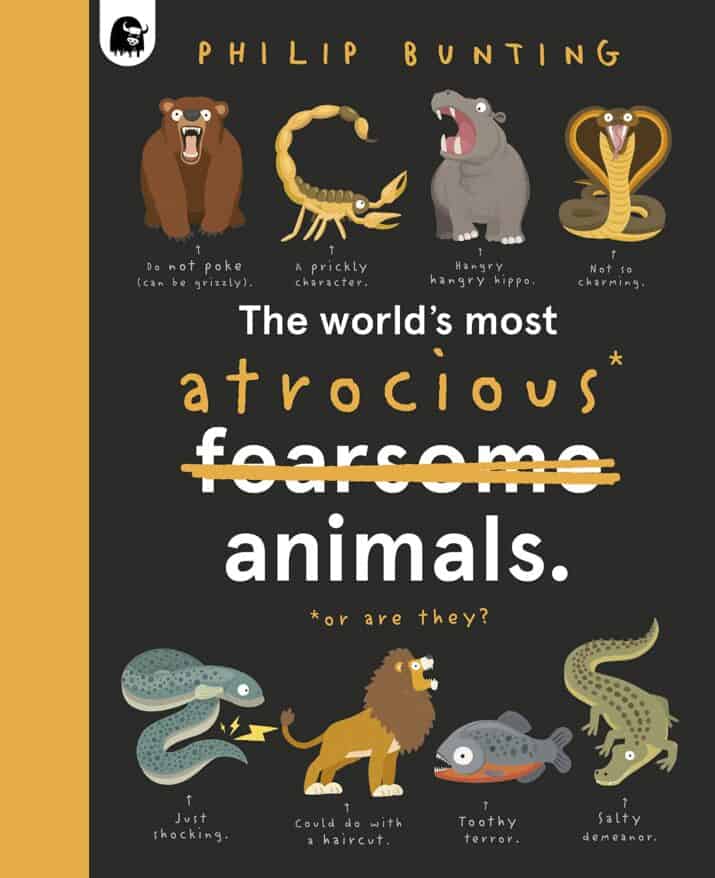
The World’s Most Atrocious Animals *Or Are They? by Philip Bunting
The animal information is both fascinating and hilarious because the captions for each animal are funny and quirky. “Hangry Hangry Hippo.” (Meaning, this isn’t actually 100% nonfiction.) Fortunately, the paragraph below each illustration is more information with the pertinent scary details about the fearsome animal. “A hippo’s most terrifying feature is its enormous jaws.” Read about the alligator snapping turtle, red kangaroo, bull shark, Goliath birdeater, and other scary animals. The illustrations are eye-catching, with colorful backgrounds and appealing design.
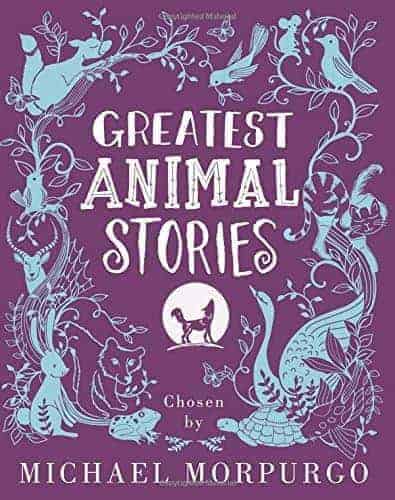
Greatest Animal Stories chosen by Michael Morpurgo (ages 4 – 8)
I love the entertaining stories and the artwork in this fictional storybook as well as the text to picture ratio which is absolutely perfect! Perfect for reading aloud and perfect for reading to yourself. The stories are about all animals, some from different cultural traditions; most of the stories contain a valuable lesson like “The Fox and the Crow” or explain a natural phenomenon like “How the Bear Lost His Tail.”
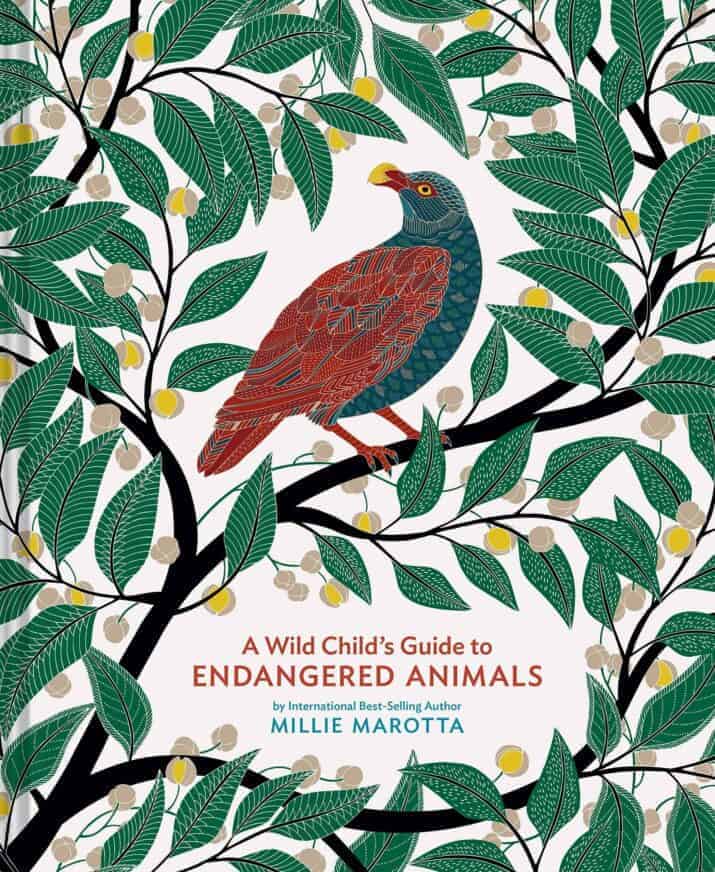
A Wild Child’s Guide to Endangered Animals by Millie Marotta (ages 8 – 12)
Any child who loves the natural world, especially the animals, will be obsessed with this oversized book. Richly illustrated in earthy tones, the author shares information about 43 endangered animals from the oceans to the forests, mountaintops to the tundra; all who need protection. You may be as surprised at some of the animals in danger, including caribou and giraffes. Plus, I suspect that you’ll learn about a menagerie of new species you didn’t know about before as you pour over the pages.
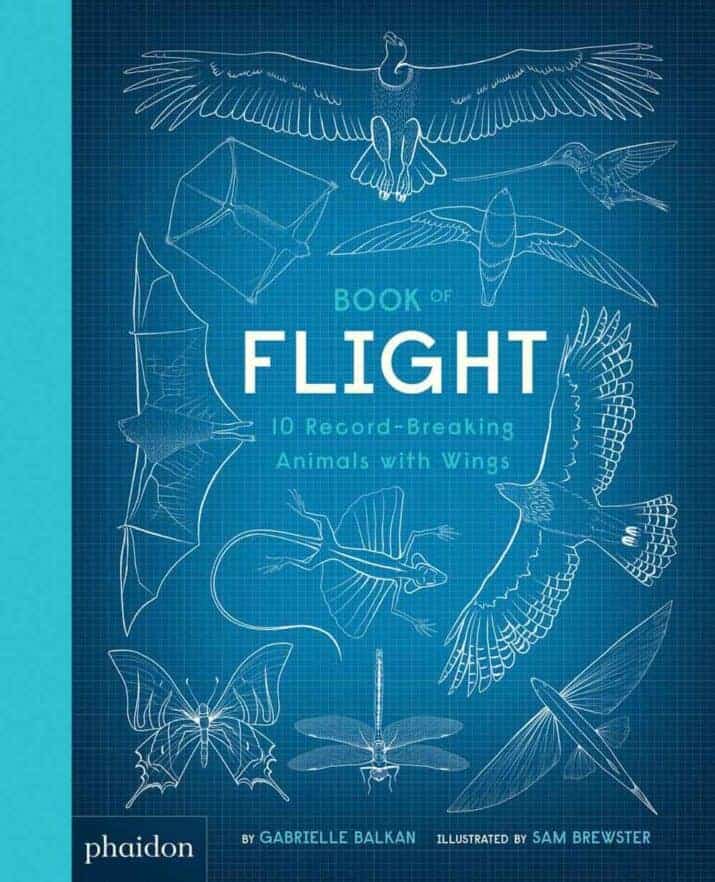
Book of Flight: 10 Record-Breaking Animals with Wings by Gabrielle Balkan, illustrated by Sam Brewster (ages 6 – 12)
This cool, oversized picture book gives readers clues about unique flying creatures and then asks readers to guess the bird using the clues and the illustration. For example, when trying to guess the fastest flyer, you’ll read that the bird migrates to Asia, swallows flying ants and bees for breakfast, and was named for the needle-like tips of its tail feathers. Turn the page to find the answer… a white-throated needletail. Even cooler, the answer has a full-color, textured illustration, plus more information. The animals in this book include an emperor dragonfly, a Philippine eagle, a Madagascan flying fox, and a California flying fish.

Animals on the Move (Animal Planet) by Dorothea DePrisco (ages 7+)
Get schooled with this fascinating nonfiction book about animals. It focuses on how and why these animals move and cool facts. For example, did you know the gnu moves in a zigzag pattern when in danger and kicks up a dust storm when it spars? Ultimately, this is great for reluctant and struggling readers as well as all kids who would love reading bite-sized facts about animals.

The Screaming Hairy Armadillo and 76 Other Animals with Weird, Wild Names by Matthew Murie and Steve Murrie, illustrated by Julie Benbassat (ages 8 – 12)
Get ready for funny names, magical names, fierce names, delicious names, and weird names. But even better is the ANIMALS with these unusual names. Like the striped pyjama squid which is a cool-looking stripped squid. Or the yeti crab, which is a crustacean with hairy arms. My favorite weird creature is the Tasseled Wobbegong! Permanent facts (species, habitat, and interesting details) are written in a text box with a well-written elaboration of about a page describing the animal’s looks, behavior, habitat, abilities, and more. Each animal has at least one illustration, sometimes more than one, and sometimes a photograph. Fantastic!
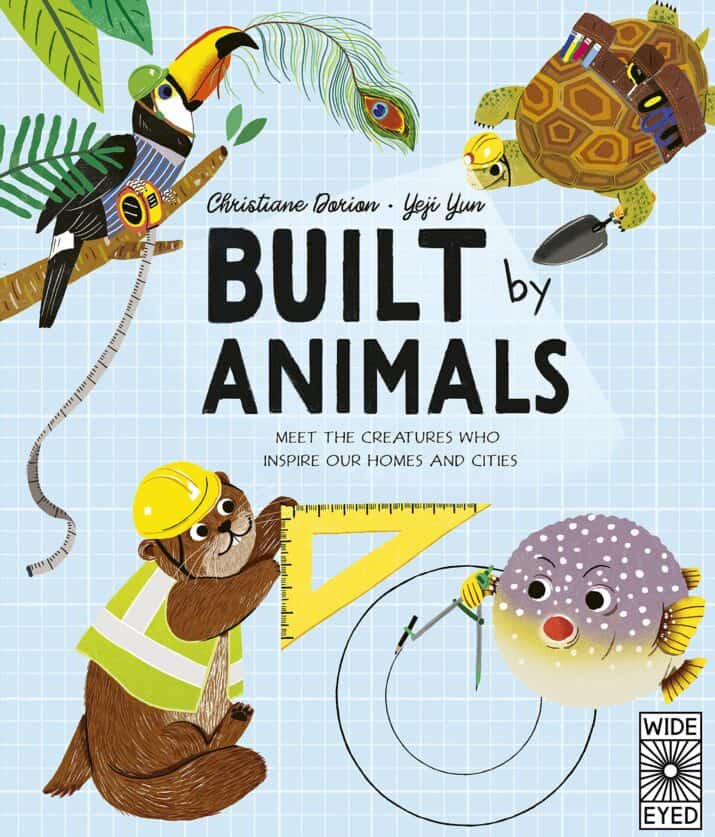
Built by Animals: Meet the Creatures Who Inspire our Homes and Cities by Christine Dorian, illustrated by Yeji Yun (ages 7 – 12)
Learn about animal construction, from the animal’s home-building materials to their designs and more. This book is fascinating, and the illustrations are engaging.
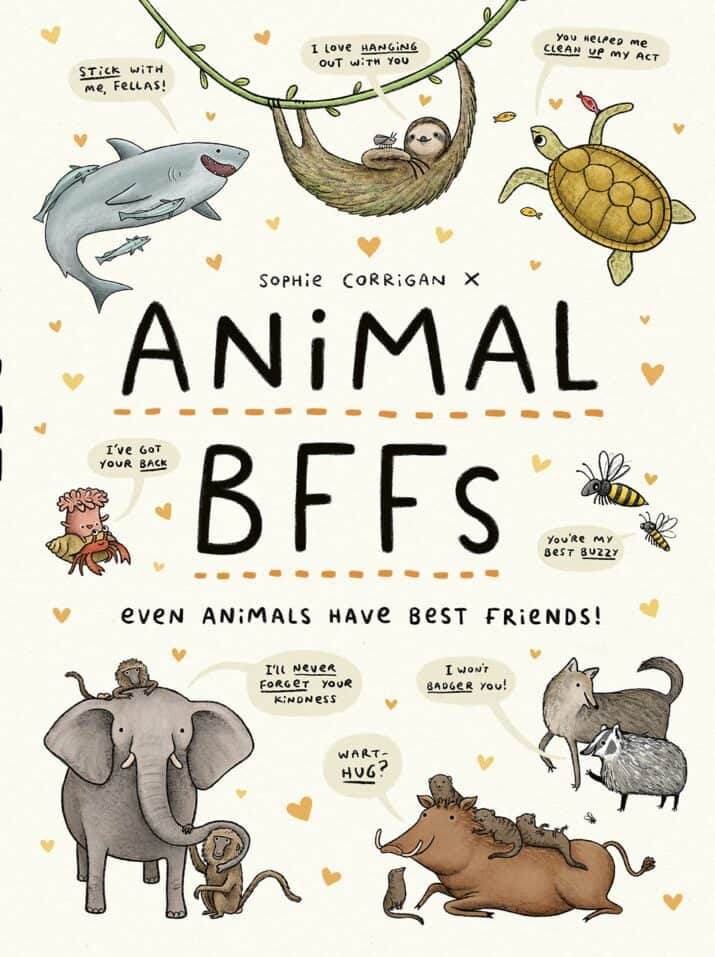
Animal BFFs by Sophie Corrigan (ages 7 – 12)
I love the funny dialogue bubbles of conversation between animal “friends” that you haven’t ever heard about — like warthogs and banded mongooses or ruby-throated hummingbirds and spiders– and why they’re paired up. Delightful, interesting, and informative.
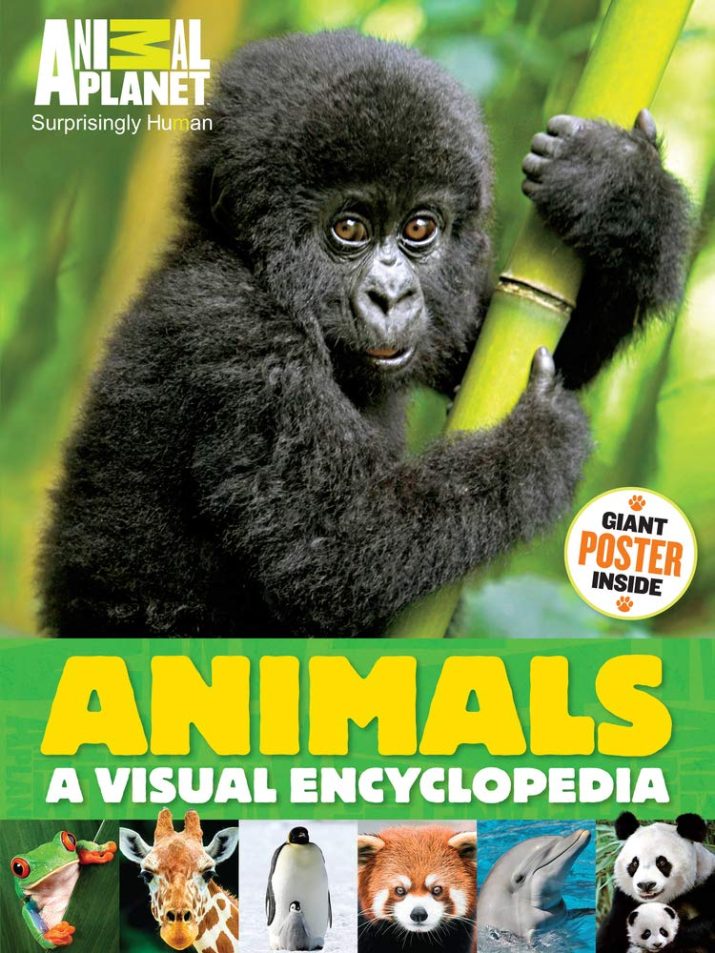
Animal Planet Animals A Visual Encyclopedia by Animal Planet (ages 8 – 12)
Beautiful photographs and bite-sized chunks of information showcase more than 2,500 animals from the seven major animal groups: mammals, birds, reptiles, amphibians, insects and arachnids, invertebrates, and fish.
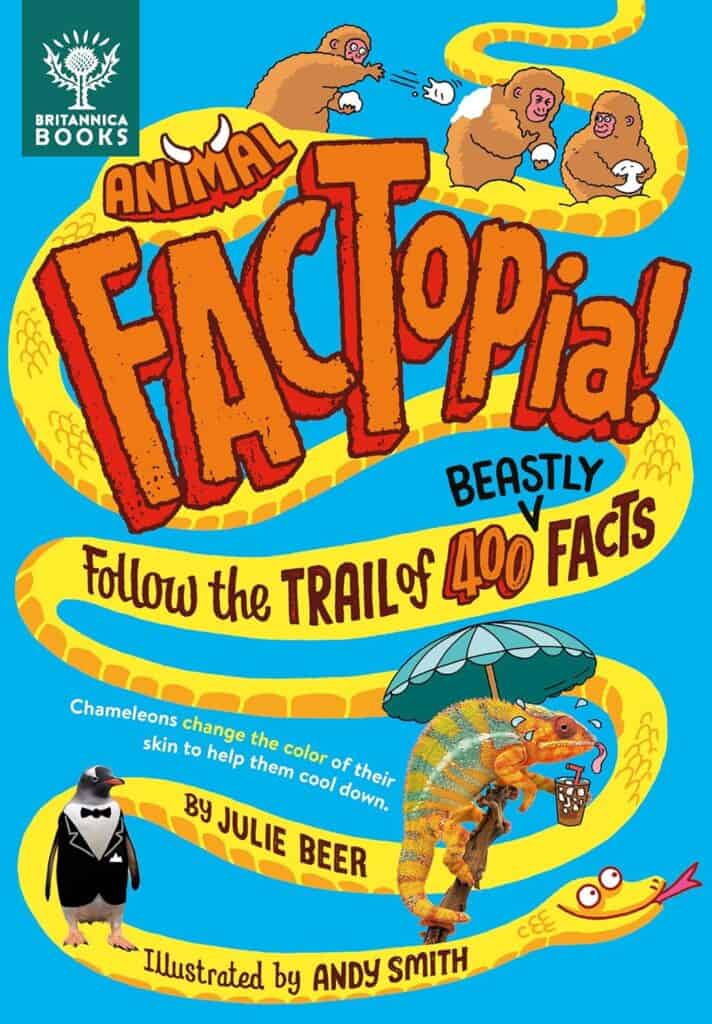
Animal Factopia! Follow the Trail of 400 Beastly Facts written by Julie Beer, illustrated by Andy Smith
This is a new favorite nonfiction series that belongs on your bookshelves! Your readers will love it.

Animal Planet Animal Atlas (ages 6 – 12)
Extra-large pages of continents show the biomes and animals who live in each. Subsequent pages feature colorful close-up photographs of animals matched with information about the animal– where it lives, why it lives there, and what it eats. This atlas is SO colorful and well designed; any reader will be drawn to look at the photographs and read it extensively. Impressive!
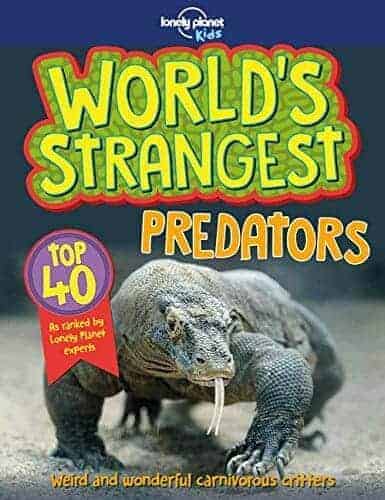
The World’s Strangest Predators Top 40 Weird and Wonderful Carnivorous Critters (ages 8 – 12)
Do you know about the weirdest predators? You might be surprised to learn that #40 on the list is the short-tailed shrew — a tiny terror with venom glands who is a predator to frogs and mice. Learn more about weird predators in this unique book that includes the Tasmanian devil, tentacled snake (so gross), pirate spider, and #1 — the honey badger! And to think, I thought honey badgers only ate honey. They do but also will eat anything! Yikes.
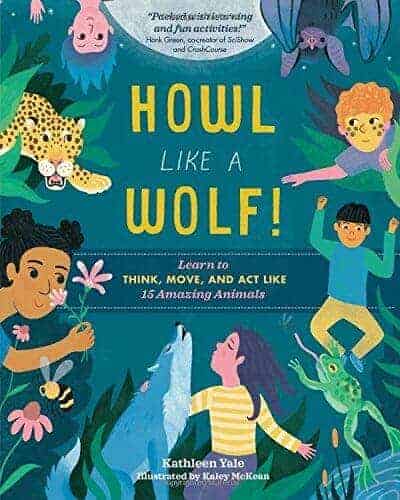
Howl Like a Wolf! Learn to Think, Move, and Act Like 15 Amazing Animals by Kathleen Yale, illustrated by Kaley McKean (ages 8 – 12)
I can see homeschoolers LOVING this nature book. Why? Because it is almost an interactive curriculum that contains both fascinating information as well as fun activities to do. For example, read about the bowerbird’s different types of nests, then make your favorite type of nest. I love the activity idea to camouflage yourself with clothes or face painting like a leopard after reading all about leopards. Other animals include raven, skunk, deer, octopus, bat, wolf, and honeybee. Colorful illustrations throughout.
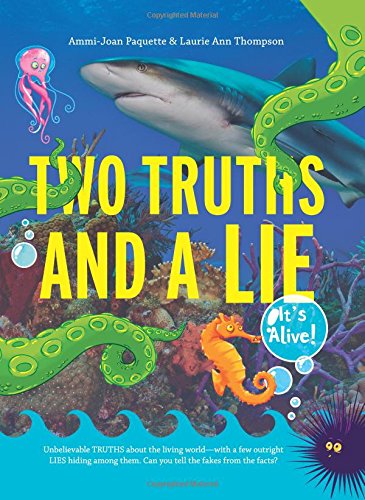 Two Truths and a Lie by Ammi-Joan Paquette and Laurie Ann Thompson, illustrated by Lisa K. Weber (ages 8 – 12)
Two Truths and a Lie by Ammi-Joan Paquette and Laurie Ann Thompson, illustrated by Lisa K. Weber (ages 8 – 12)
This book is GENIUS! It’s an impressive dare really for kids to read and figure out what is true and what is a lie. Who can resist their dare? The premise promises to cement knowledge of real and false because no answers are given. Readers will be reading, thinking deeply and researching while they’re immersed in the book… The conversational tone in which this book makes the reading flow smoothly. That, plus the addition of many illustrations and photographs make this one hard-to-put-down nonfiction middle grade book.
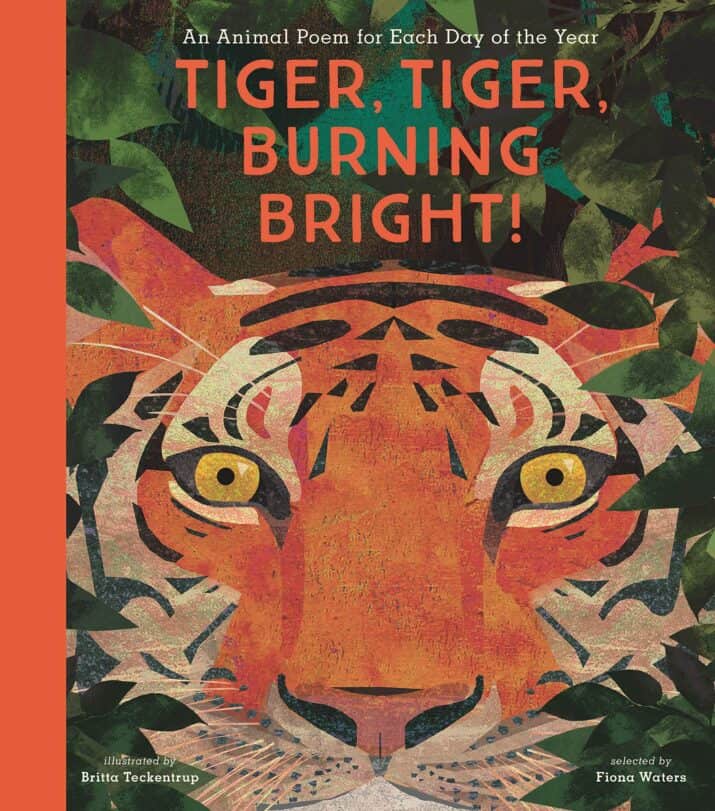
Tiger, Tiger Burning Bright: An Animal Poem for Each Day of the Year by Fiona Waters, illustrated by Britta Teckentrup (ages 8 – 12)
This is a hefty and impressive book of kid-friendly poetry with earthy illustrations and poems for each day of the year about animals of all kinds!
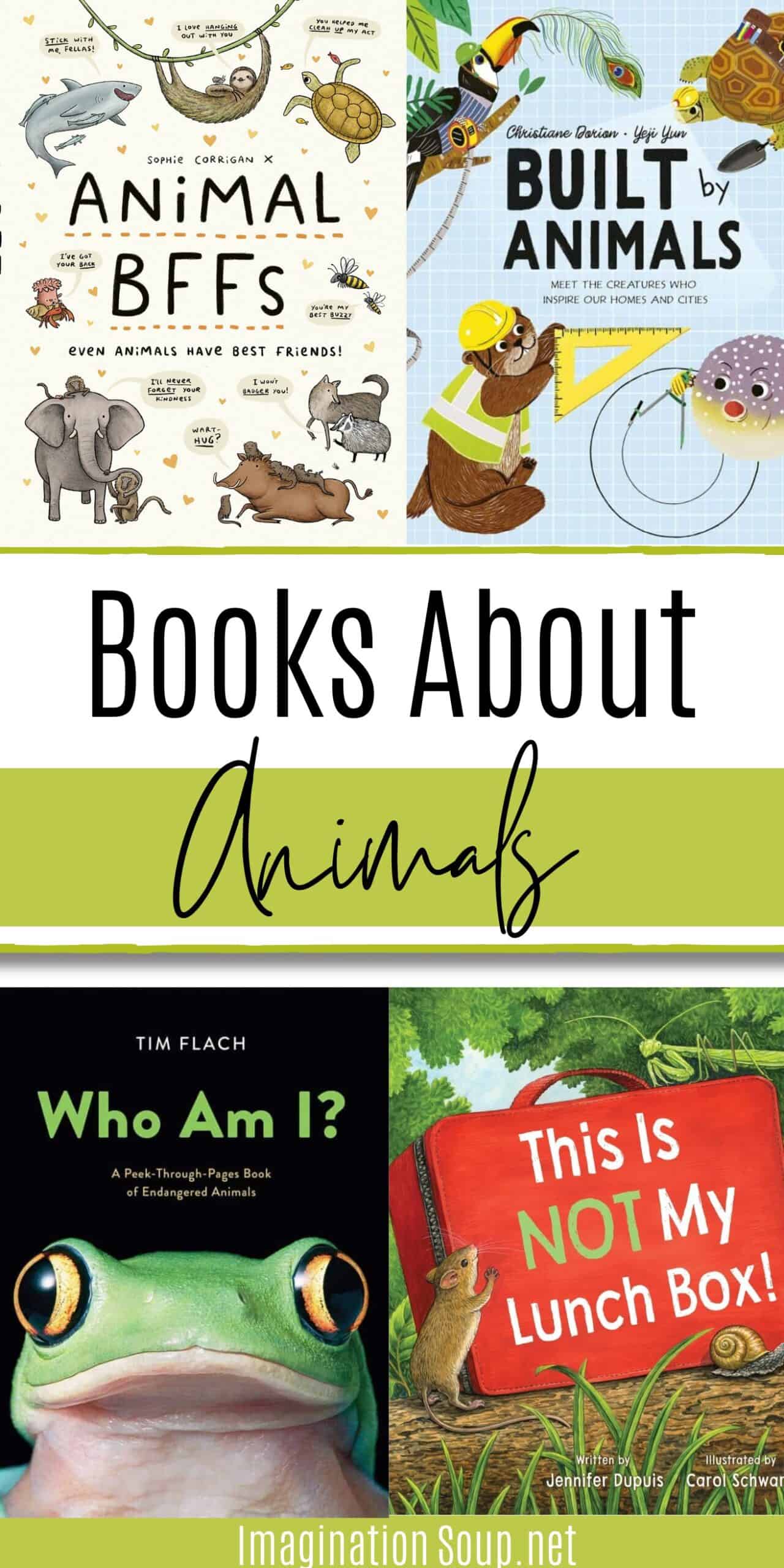
You Might Also Like

